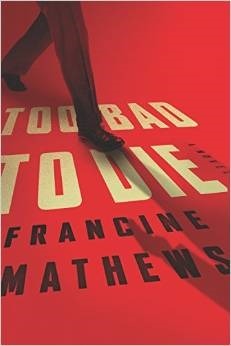What do you think?
Rate this book


368 pages, Hardcover
First published March 3, 2015
 Ian Fleming's experiences in British Naval Intelligence during WWII, American author
Ian Fleming's experiences in British Naval Intelligence during WWII, American author
 (and ex-CIA analyst) Francine Mathews spins the tale of a Nazi plot to simultaneously assassinate Churchill, FDR and Stalin at the 1943 Allied Leader Conference in Tehran (then under joint British and Soviet control). Ian Fleming wanted to become a Commando like his older brother
(and ex-CIA analyst) Francine Mathews spins the tale of a Nazi plot to simultaneously assassinate Churchill, FDR and Stalin at the 1943 Allied Leader Conference in Tehran (then under joint British and Soviet control). Ian Fleming wanted to become a Commando like his older brother
 Peter (a then-popular author of travel books and humorous adventure stories - and a handsome, successful man unlike his troublemaking disgrace of a kid brother!), but his real gift was, as the story puts it, "Lying to The Enemy". Concocting compelling, mad, just probable enough to be swallowed stories that would later make his creation James Bond the world's best-known fictional spy, Commander Fleming quickly rose to become Assistant to Naval Intelligence Chief, Rear Admiral John Godfrey (generally believed to be the basis for "M" in the Bond novels).
Peter (a then-popular author of travel books and humorous adventure stories - and a handsome, successful man unlike his troublemaking disgrace of a kid brother!), but his real gift was, as the story puts it, "Lying to The Enemy". Concocting compelling, mad, just probable enough to be swallowed stories that would later make his creation James Bond the world's best-known fictional spy, Commander Fleming quickly rose to become Assistant to Naval Intelligence Chief, Rear Admiral John Godfrey (generally believed to be the basis for "M" in the Bond novels).